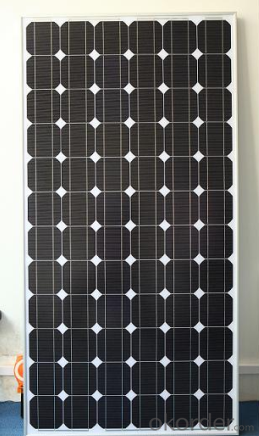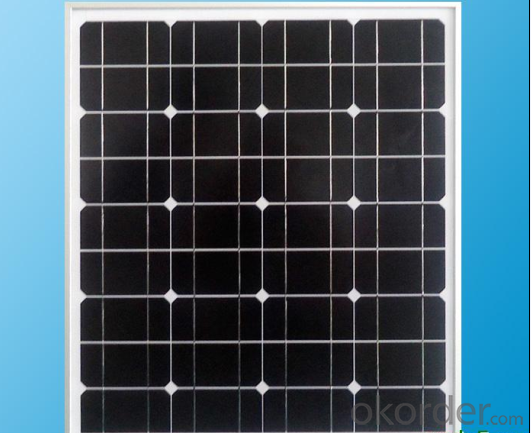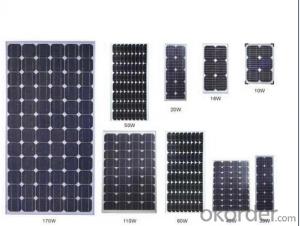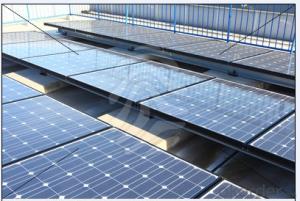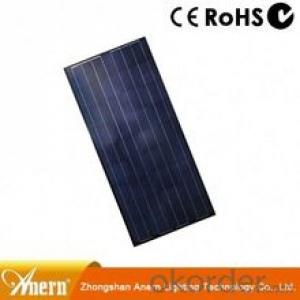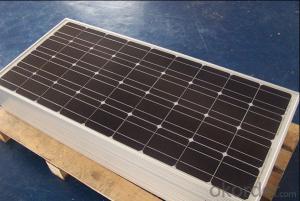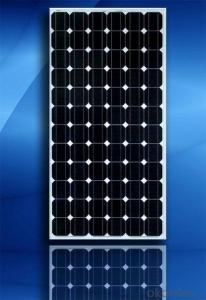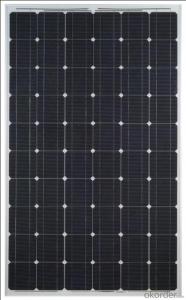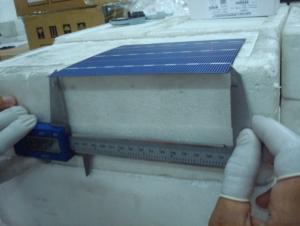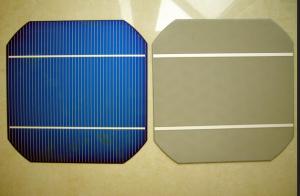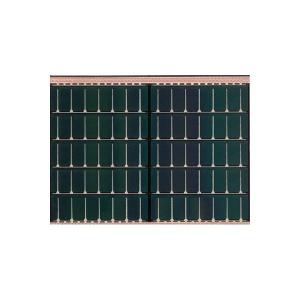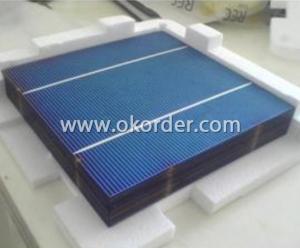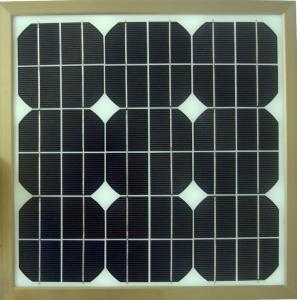Generac Solar Cells - High Efficiency 295W Monocrystalline Solar Cell Price with 25 Year Warranty CNBM
- Loading Port:
- Qingdao
- Payment Terms:
- TT OR LC
- Min Order Qty:
- 10 set
- Supply Capability:
- 300000 set/month
OKorder Service Pledge
OKorder Financial Service
You Might Also Like
High Efficiency 295W monocrystalline solar cell price with 25 year warranty
Quick Details
| Place of Origin: | China (Mainland) | Brand Name: | cnbm | Model Number: | PS-M672300 |
| Material: | Monocrystalline Silicon | Size: | 1956*990*40mm | Number of Cells: | 72 pieces |
| Max. Power: | 300W | Weight: | 23kg monocrystalline solar panel | Product warranty: | 25 years |
| Maximum system voltage: | 1000VDC | Tolerance: | 0/+3% | Cable length: | 1.2m |
| Connector: | MC4 compatible connector | Junction box: | IP65 Rated | Frame: | Anodized aluminium alloy |
| Front Cover: | 3.2mm thick.low iron tempered glass | Cell type: | Monocrystalline solar panel cells 156mm |
Packaging & Delivery
| Packaging Detail: | Monocrystalline solar panel packing information 28pcs. / box 20pcs. / pallet 560 pcs. / 40ft 602 pcs. / 40ft (H) |
| Delivery Detail: | in one week |
Specifications
1. Best monocrystalline solar cell price
2. 300W Monocrystalline solar panel with best price
3. 25 years warranty
Product Name
High Efficiency monocrystalline solar cell price with 25 year warranty
Product Description
1.Solar Panel Descprition
PS-M672 Series solar panel is connected in series by 70 pieces of 156mm×156mm Mono Crystalline silicon cells. Solar panel performance is produced according to IEC61215, IEC61730 international standard.
2.Solar Panel Characteristics
1)Manufactured according to international quality and Environment Management
System (ISO9001, ISO14001)
2)High efficiency crystalline silicon solar cells
3)High transmission Iow iron tempered glass, strong mechanical resistance
4)Anti-ageing EVA and excellent anti-climate back sheet
5)Anodized aluminum frame improves load resistance capabilities for heavy wind loads.
6)Standard waterproof junction box
7)High endurance to different weather
8)Good and friendly package with less transportation and storage space.
3.Solar Panel Warranty
1)10 years limited manufacturing warranty
2)10 years for 90% of warranted minimum power
3)25 years for 80% of warranted minimum power
4.Solar Panel Electric Characteristics
| Cell Type | Mono Solar Cell 156mm*156mm | |||
| Item | PS-M672285 | PS-M672290 | PS-M672295 | PS-M672300 |
| Power | 285W | 290W | 295W | 300W |
| Voc(V) | 44.8 | 45 | 45.3 | 345.5 |
| Isc(I) | 8.6 | 8.75 | 8.85 | 8.95 |
| Vm(V) | 36.2 | 36.3 | 36.5 | 36.6 |
| Im(I) | 7.87 | 7.99 | 8.08 | 8.20 |
| Cell Efficiency | 17.08 | 17.38 | 17.68 | 17.98 |
| Module Efficiency | 14.72 | 14.98 | 15.23 | 15.49 |
| Fuse | 15A | |||
| Max System Voltage | 1000VDC | |||
| Cell Number | 72cells | |||
| Tolerance | 0/+3% | |||
| dule Size | 1956*990*40(mm) | |||
| Weight | 23KGS | |||
| Cable Length | 0.9m | |||
| Connector | MC4 or compatible connector | |||
Global Projects
20MW Solar Power Plant in China
130KW Solar Power Plant in Japan
700KW Solar Power Plant in Japan
- Q: How do solar cells perform in regions with high levels of air pollution?
- Solar cells tend to perform less efficiently in regions with high levels of air pollution. The particles and pollutants in the air can block sunlight from reaching the solar cells, reducing their ability to generate electricity. Additionally, air pollution can accumulate on the surface of the solar panels, further reducing their efficiency. Regular cleaning and maintenance of the solar panels can help mitigate the impact of air pollution on their performance.
- Q: Can solar cells be used in shopping centers?
- Yes, solar cells can be used in shopping centers. They can be installed on rooftops or in parking lots to generate clean and renewable energy, helping to reduce electricity costs and carbon emissions. Solar cells can also be integrated into the design of buildings, such as glass facades or awnings, allowing shopping centers to harness solar power while maintaining aesthetic appeal.
- Q: How does the solar panel produce it yourself?
- ?The second step: the use of natural fuel for the titanium dioxide coloring, the fresh or frozen black plum, plum, pomegranate or black tea, with a tablespoon of tax for extrusion, and then put the titanium dioxide film for coloring, about 5 Minutes until the film becomes dark purple. If the two sides of the film coloring uneven, you can put in the soak for 5 minutes, then rinse with ethanol, and gently wipe with soft paper.
- Q: How does the photovoltaic cells work?
- Solar Cells, covering single crystal, polycrystalline and amorphous materials utilising homojunctions and heterojunctions, Schottky barriers, liquid junctions and their applications.
- Q: My solar cells are broken, can I just buy one and replace it?
- You need to hire a professional to fix that for you.
- Q: What is the solar cell?
- The structure of solar cells is diverse. Now, PN-type solar cells composed of P-type semiconductors and N-type semiconductors are used. They are mainly composed of P-type and N-type semiconductors, electrodes, and antireflection films.
- Q: Are solar cells affected by temperature changes?
- Yes, solar cells are affected by temperature changes. As the temperature increases, the efficiency of solar cells decreases. This is because higher temperatures can cause an increase in the electron-hole recombination rate, leading to a reduction in the generation of electricity. Conversely, lower temperatures can improve the performance of solar cells by reducing thermal losses. However, extreme temperature changes can also cause stress and potential damage to the cells, so maintaining a moderate operating temperature is important for optimal performance.
- Q: Can solar cells be used for powering agricultural equipment?
- Yes, solar cells can be used for powering agricultural equipment. Solar panels can generate electricity from sunlight, which can then be used to power various agricultural equipment such as irrigation systems, water pumps, and electric fences. This can provide a sustainable and environmentally friendly alternative to traditional power sources, especially in remote or off-grid farming locations.
- Q: Can solar cells be used in powering e-bikes?
- Yes, solar cells can be used in powering e-bikes. Solar panels can be installed on the surface of an e-bike or on a separate charging station to harness solar energy and convert it into electrical power. This power can then be used to charge the e-bike's battery, extending its range and reducing the reliance on grid electricity.
- Q: How much land is required to install solar cells?
- The amount of land required to install solar cells varies depending on various factors such as the type and efficiency of the solar panels, the amount of electricity desired, and local conditions. On average, it is estimated that 1 megawatt (MW) of solar power requires approximately 5-10 acres of land. However, advancements in solar technology have led to the development of more efficient panels, reducing the land footprint needed for installation. Additionally, innovative approaches like rooftop solar panels can utilize existing structures, minimizing the need for additional land.
Send your message to us
Generac Solar Cells - High Efficiency 295W Monocrystalline Solar Cell Price with 25 Year Warranty CNBM
- Loading Port:
- Qingdao
- Payment Terms:
- TT OR LC
- Min Order Qty:
- 10 set
- Supply Capability:
- 300000 set/month
OKorder Service Pledge
OKorder Financial Service
Similar products
Hot products
Hot Searches
Related keywords


